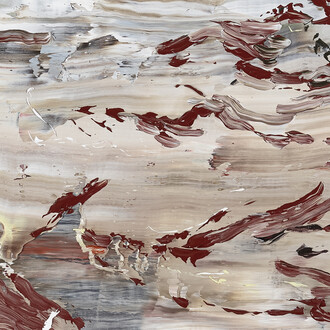We are no longer at the center of the world. The modern fiction of the human—autonomous, rational, sovereign—has irreversibly shattered. In its place, a new ontology is emerging: distributed, entangled, mechanical. The anthropocene, with its planetary crises and accelerating techno-scientific shifts, has destabilized the idea of a discrete human subject. Today, we inhabit a post-human condition shaped as much by algorithms and networks as by memory and flesh.
As Rosi Braidotti argues, the post-human does not aim to erase or transcend the human, but to decenter it. The figure of Man—universalized, white, male, colonial—has dominated Western thought for centuries. But this figure was always a fiction, one that excluded, marginalized, and silenced. To move beyond it is to embrace hybridity, nonlinear forms of existence, and modes of subjectivity mediated by technology.
In her Cyborg manifesto, Donna Haraway invites us to imagine a future where bound aries are porous—between human and machine, nature and culture, self and network. The artist, in this landscape, is not an isolated genius but a cyborg-body, a node within an extended ecology of code, matter, archives, and algorithms.
Yet the post-human is not merely a subjective or aesthetic shift—it is also a collapse of perception, a crisis of scale and causality.
Philosopher Timothy Morton defines hyperobjects as entities so vast and distributed across space and time that they elude our grasp: climate change, plastic, nuclear radiation, invisible emissions that thread through our everyday lives. Hyperobjects challenge our habitual ways of thinking, feeling, and representing. They force us into a new ecology of consciousness—no longer anthropocentric, but interconnected, layered, unsettling.
This exhibition is titled Hyperballad. A title that evokes movement—a slow, melancholic dance, yet exaggerated and hyper-emotional, amplified through cables and prosthetics. It is not merely an exhibition; it is a performative act: a dance on a sinking raft, a fragile choreography between the extractive processes that power our devices and the digital aesthetics that sublimate them; between the body disassembled by the algorithm and the emotional bonds dissolving in a liquid, hyperconnected present. It is a post-human ballad—dancing not despite the collapse, but within it.
New media—3D scanning, digital painting, generative models—are not merely tools, but cognitive atmospheres. They extend the self, alter the real, and produce aesthetics that belong neither to the natural nor the artificial, but to a hybrid, uncertain zone. The artwork becomes an interface between the biological and the synthetic, between the human and the more-than-human. The artist works with flows, data, computational ecosystems—not creating forms, but activating systems, orchestrating visible and invisible forces.
In this context, to speak of ecology is also to accept its dark side. Far from romantic or harmonious visions of nature, Morton’s dark ecology reminds us that we live immersed in a contaminated world—full of residues and ghosts. Our lives, our works, our loves are already entangled in this toxic web.
There is no “outside” to return to. And yet, within this complexity, art offers a space to breathe—to collectively feel the crisis, but also to imagine new forms of sensitivity, new grammars of the body, of time, of matter.
Hyperballad is this: an uncertain song, a fragile hymn to the possibility of dancing among the ruins. A lyrical act of transformation through survival, of presence infused with the time we are given.














